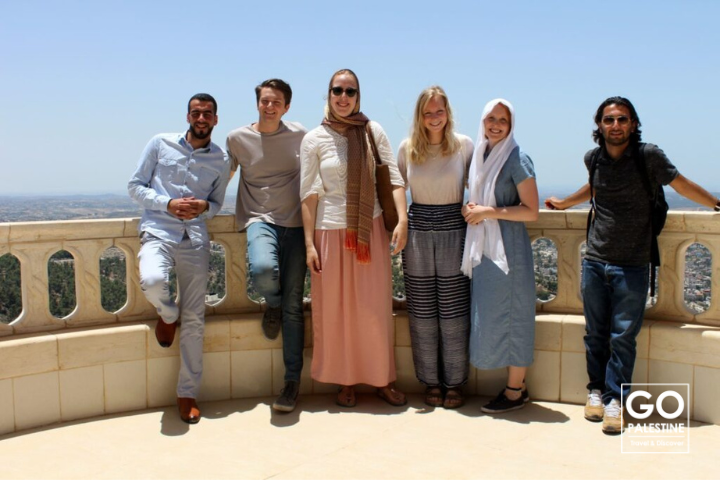
My first view of Bethlehem was from a kibbutz where the party with whom I was travelling stopped for lunch before going on to see the place where Mary gave birth to Jesus. We looked across a wide valley to see the buildings of Bethlehem above terraces of olive groves, hugging the ridge on the other side. Towers of Christian churches and Moslem mosques dominated the skyline. Then we were driven on, eight kilometres from Jerusalem, past the fields where the shepherds watched their flocks by night, up a steep hill to The Church of the Nativity which is described as the oldest church in the world.
After the destruction of Jerusalem in 70 A.D., Christians returned and identified many of the sites associated with Jesus Christ. In 135 A.D., the Emperor Hadrian attempted to obliterate these sites. He built a wall around the hill of Calvary, filled it in and on it built a temple to Venus. On the site identified as the birthplace of Jesus, he built a temple to Adonis. However, what Hadrian intended to bury forever he actually preserved and located for future generations.
When Constantine made Christianity the religion of the Empire early in the fourth century, Hadrian’s buildings were demolished and the sacred sites were unearthed. The place where Mary gave birth to Jesus was found intact, and Constantine surrounded it with a great church. This church was badly damaged in a revolt of Samaritans in 519, but it was rebuilt by the Emperor Justinian. It was the only church in the Holy Land which escaped destruction by the Persians in 614 when they embarked on a campaign to destroy all Christian buildings.
The Church of the Nativity was spared because the Persians found in it a mosaic representing the three wise men in Persian dress. There is only one entrance to The Church of the Nativity now. Two large doors were walled up, and the third was reduced to a small narrow opening, known as The Eye of the Needle. This was done to prevent men riding into the building on horseback, bent on destruction.
To enter the building it is necessary to bow low, as did the shepherds and wise men when they beheld the Christ child.The grotto of Christ’s birth dispels all the Christmass card conceptions one may have had of the Nativity. There was no quaint stable with clean convenient straw, but simply the hard earth shelter of a rugged cave in which a few animals could take refuge.
Before I left Australia I had promised two friends who were ill, that I should say special prayers for them in the Holy Land. People were lighting candles and placing them near the grotto. I acquired two candles and made them the outward and visible sign of the prayers I offered for my friends. I left them glowing in the shadow of that place which had been illuminated by the Star of Bethlehem.
A silver star with the Latin inscription Hic de Maria Virgine Jesus Christus natus est (Here Jesus Christ was born of the Virgin Mary), marks the place where Mary gave her baby to the world. To the right of this place was the site of the manger in which the baby was laid in swaddling clothes.
In the first chapter of his Gospel, S. John states that the Son of God is the eternal Word by whom all things were made (John 1:3) and that the Word became flesh and dwelt among us (John 1:14).
S. Paul wrote, “in Christ was all the fulness of God embodied” (Colossians 2:9).
The title Mother of God (in Greek Theotokos) was given to Mary at The Ecumenical Council of Ephesus in 431. The title was given, not so much to honour Mary as to emphasise the deity of Jesus Christ. Those who refuse to honour Mary as the Mother of God cannot truly believe in the Incarnation.
In The Apostles’ Creed, in professing our belief in the manner in which the Word became flesh, we say, “He was conceived by the Holy Spirit, born of the Virgin Mary.” It was God himself who planted the seed of human life in the womb of the Blessed Virgin Mary of Nazareth.
As Nicholas Cabasilas says, “The Incarnation was not only the work of the Father, of his Power and his Spirit, but it was also the work of the will and faith of the Virgin. Just as God became incarnate voluntarily, so he wishes that his Mother should bear him freely and with her full consent.” In the Nicene Creed we profess our belief that “for us men and for our salvation he came down from heaven, and was incarnate by the Holy Ghost, of the Virgin Mary and was made man.”
How to reach us out?
Please send an email to [email protected] Or [email protected]. In the body of the email tell us of your interest or ask any questions you may have. Very shortly we will reply to you!
